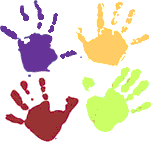Department of Special Education and Communication Disorders
Document Type
Article
Date of this Version
2006
Abstract
Early spontaneous orofacial movements have rarely been studied experimentally, though the motor experiences gained from these behaviors may influence the development of motor skills emerging for speech. This investigation quantitatively describes developmental changes in silent, spontaneous lip and jaw movements from 1 to 12 months of age using optically based 3D motion capture technology. Twenty-nine typically developing infants at five ages (1, 5, 7, 9, and 12 months) were studied cross-sectionally. Infants exhibited spontaneous facial movements at all ages studied. Several age-related changes were detected in lip and jaw kinematics: the occurrence of spontaneous movements increased, movement speed increased, the duration of movement epochs decreased and movement coupling among different facial regions increased. Additionally, evidence for stereotypic movements was not strong. The present findings suggest that, during the first year of life, early spontaneous facial movements undergo significant developmental change in the direction of skill development for speech.


Comments
Published in Developmental Psychobiology 48 (2006), pp. 16–28; doi: 10.1002/dev.20112 Copyright © 2005 Wiley Periodicals, Inc. Published online in Wiley InterScience http://www.interscience.wiley.com Used by permission.